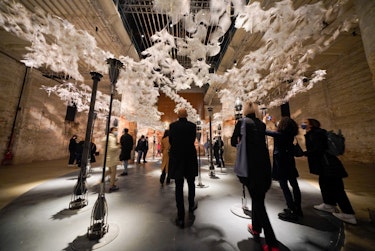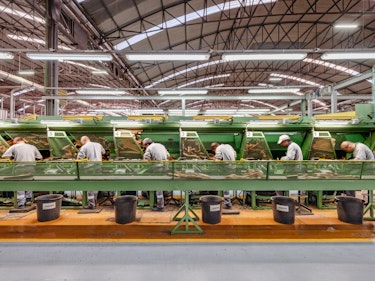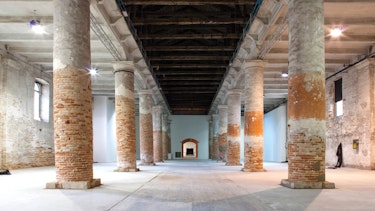The Venice Architecture Biennale, held every two years in the picturesque city of Venice, Italy, is an esteemed event that draws the attention of architects, designers, and creative thinkers from around the world. Serving as a platform to showcase the latest trends, innovations, and ideas in the field of architecture, the Biennale is a melting pot of diverse cultures, perspectives, and design philosophies. The 2023 edition of the Biennale was no exception, captivating audiences with its impressive national pavilions and their standout features that pushed the boundaries of architectural imagination.
As an international gathering of architectural talent, the 2023 Venice Architecture Biennale provided a unique opportunity for countries to present their visions for the future of built environments. National pavilions served as vibrant showcases of architectural excellence, displaying the innovative approaches, thought-provoking concepts, and cutting-edge technologies that are shaping the architectural landscape around the globe.
The Biennale's reputation as an influential event drew the attention of architects, designers, scholars, and enthusiasts alike, all eager to witness the emerging trends that would shape the architectural discourse for years to come. With each edition, the Biennale offers a glimpse into the ever-evolving nature of architecture and its profound impact on society, culture, and the environment.
In this essay, we will delve into the standout features observed in the national pavilions at the 2023 Venice Architecture Biennale, exploring the trends that captured the imagination and stirred conversations within the architectural community. By analyzing the diverse approaches and innovative concepts presented, we can gain valuable insights into the direction of architecture and the challenges it seeks to address in the present and future.

Credit: Floornature
From sustainable design and adaptive reuse to inclusive design and technological integration, the national pavilions at the 2023 Biennale showcased a rich tapestry of ideas that redefine the boundaries of what is possible in the realm of architecture. These pavilions exemplified the creative spirit and intellectual rigor that drive the industry forward, sparking dialogue and inspiring collaboration among architects, designers, and enthusiasts from various backgrounds.
As we explore the standout features and trends witnessed at the 2023 Venice Architecture Biennale, it becomes evident that architecture is not just about constructing buildings, but a powerful tool for shaping societies, improving lives, and addressing pressing global challenges. The Biennale acts as a catalyst for architectural innovation, providing a platform for visionary ideas to come to life and encouraging interdisciplinary collaborations that foster creativity and ingenuity.
In the following sections, we will examine the prominent trends that emerged from the national pavilions, showcasing how architects and designers are reimagining the built environment to be more sustainable, inclusive, and responsive to the needs of the communities they serve. By understanding these trends, we can gain a deeper appreciation for the transformative power of architecture and its role in shaping a better future for all.

Credit: Floornature
The 2023 Venice Architecture Biennale showcased a wide array of innovative ideas, trends, and approaches in the field of architecture. The standout features observed in the national pavilions demonstrated the industry's commitment to sustainable design, adaptive reuse, inclusive design, technological integration, and biophilic design.
Sustainable Design:
One of the most prominent trends seen across many national pavilions was a strong emphasis on sustainable design principles. Architects and designers showcased their commitment to environmental stewardship by integrating renewable materials, energy-efficient technologies, and innovative waste management systems into their projects. For example, the Danish Pavilion featured a display of sustainable urban solutions, including green rooftops and vertical gardens, while the Dutch Pavilion showcased sustainable housing designs that focused on carbon neutrality and circular economy principles. These pavilions demonstrated a growing recognition of the urgent need to address climate change and promote sustainable practices within the architecture community.

Credit: Metalocus
Adaptive Reuse and Regeneration:
Another notable trend in the national pavilions was the emphasis on adaptive reuse and regeneration of existing structures. Architects showcased their ability to transform neglected or abandoned buildings into vibrant and functional spaces. The Spanish Pavilion, for instance, highlighted successful examples of architectural interventions in historic sites, demonstrating how old structures could be revitalized and repurposed for contemporary needs while preserving their cultural heritage. This trend emphasized the importance of preserving architectural history and minimizing waste through adaptive reuse, rather than demolishing and rebuilding.

Credit: Archdaily
Inclusive Design and Social Impact:
The 2023 Biennale also witnessed a significant focus on inclusive design and the social impact of architecture. Many national pavilions explored ways in which architecture could address societal challenges and create spaces that are accessible, equitable, and inclusive for all. The Finnish Pavilion, for example, showcased projects that incorporated universal design principles, ensuring that buildings and public spaces are accessible to people of all abilities. The Brazilian Pavilion highlighted community-driven design initiatives that aimed to empower marginalized populations and foster social cohesion. These pavilions exemplified the growing recognition of architecture's role in promoting social justice and equity.

Credit: Archdaily
Technological Integration:
Technological integration was another prominent trend observed in the national pavilions. Architects and designers showcased how advancements in digital technologies and computational design are transforming the architectural process. The Italian Pavilion, for instance, presented projects that utilized parametric design tools and robotic fabrication techniques to create intricate and complex structures. The Japanese Pavilion explored the potential of virtual reality and augmented reality in architectural visualization and user experience. These pavilions highlighted the ever-evolving relationship between technology and architecture, pushing the boundaries of design possibilities.

Credit: Designboom
Biophilic Design and Wellness:
The importance of connecting with nature and promoting wellness through design was a prevalent trend at the 2023 Biennale. Many national pavilions showcased projects that integrated biophilic design principles, emphasizing the use of natural materials, abundant green spaces, and access to natural light. The Australian Pavilion, for example, focused on designing buildings that prioritize occupants' well-being by incorporating elements such as natural ventilation, indoor greenery, and daylight optimization. These pavilions underscored the growing recognition of the positive impact of nature on human health and well-being, and the need to create environments that foster a connection with the natural world.

Credit: Dezeen
Overall, the national pavilions at the 2023 Venice Architecture Biennale presented a diverse range of ideas and approaches, reflecting the evolving priorities of the architectural community. The emphasis on sustainability, adaptive reuse, inclusivity, technology integration, and biophilic design signals a shift towards more environmentally conscious, socially responsible, and human-centered architecture. As these trends continue to shape the future of the built environment, it is evident that architects and designers are dedicated to creating spaces that not only meet functional needs but also prioritize the well-being of individuals and the planet. The 2023 Biennale served as a platform for these innovative ideas, inspiring architects and designers worldwide to further explore and implement these concepts in their own practices, ultimately shaping the future of architecture.
